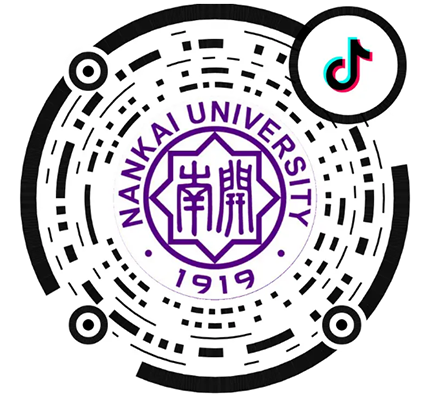Academician Li Yuliang guest for the "Hundred Years Nankai Chemistry Lecture Hall" talks with teachers and students of Nankai about the new energy material graphyne

On March 25, the Hundred Years Nankai Chemistry Lecture Hall of Nankai University was held in Tiannan United Building. On the same day, Li Yuliang, academician of the Chinese Academy of Sciences and researcher from the Institute of Chemistry of the Chinese Academy of Sciences, came to Nankai University to talk with teachers and students about the development and application of graphyne, an emerging energy material. Vice Chancellor Chen Jun of Nankai University and Professor Cheng Peng of the School of Chemistry presented commemorative medals to the Academician Li Yuliang. More than 200 teachers and students from the “New Engineering” special class undergraduates and professional class mentors, College of Chemistry, College of Electonic Information and Optical, and School of Materials Science and Engineering attended the lecture.
Different from sp3 diamond, sp2 fullerene, carbon nanotubes, and graphene, graphyne and its aggregated structure contain sp-sp2 hybridization, being an important direction for the development of current materials science. Understand their basic problems and potential applications in optics, electricity, optoelectronics, energy and catalysis represents the development trend of cross-science based on chemistry. The research team of Academician Li Yuliang established the self-assembly and self-organization methodology of graphyne-based materials based on innovative ideas, combined with the structure and growth law of carbon-based materials, considered scientific issues such as structure and energy, and finally realized the aggregation structure from one-dimensional to two-dimensional with a controllable equipment. From the large-area and highly-ordered growth methodology of two-dimensional carbon graphyne to basic and applied scientific research, Academician Li Yuliang introduced in detail the basic scientific issues and potential applications of this emerging material in the fields of energy, catalysis and photovoltaics, shared her scientific research experience and encouraged on-site teachers and students to persist in innovation, to pursue excellence and to bravely climb the world's technological peaks.

Nankai University's New Energy Science and Engineering is listed among the first batch of new engineering majors by the Ministry of Education; it is a training project that looks at the urgent need for talents in the country's new energy field, responding to the new round of scientific and technological revolution. This specialty program was established in the new century to create a new engineering course, jointly set up by the College of Chemistry and the College of Electronic Information and Optical (New Energy Specialty Class). It opened a program for low-carbon energy and 2060 carbon neutral goals, with theoretical and experimental courses related to solar energy, wind energy, biomass energy, hydrogen energy, energy economy and society, policy and safety, etc., through the application of science to engineering, to achieve cross-integration of science and engineering. The special “new energy program” was officially enrolled in September 2019 and at present it has 38 undergraduates. This major implements top-notch training, focusing on mentor system, small class, individualization, internationalization and other characteristic training modes, aiming to cultivate compound senior professionals with a solid theoretical foundation and broad practical and innovative capabilities in the new energy field, contributing to the country’s need of a rapid development of new energy. This program has achieved remarkable results in the construction of the 2019 and 2020 classes.
One Hundred Years Nankai Chemistry Lecture Hall is one of the important series of commemoration activities for the 100th anniversary of the founding of the chemical discipline of Nankai University. The lecture hall invites well-known domestic and foreign chemistry scholars and renowned representatives of government and enterprises to carry out high-level academic lectures to inspire future life, to promote talent exchanges and academic cooperation, to stimulate innovation potential, expand discipline influence, and to provide sufficient support for the development of Nankai chemistry discipline.
(Reported and photographed by Wei Xie, translated by Wenhan Lin, edited by Davide Francolino and JianjingYun)









